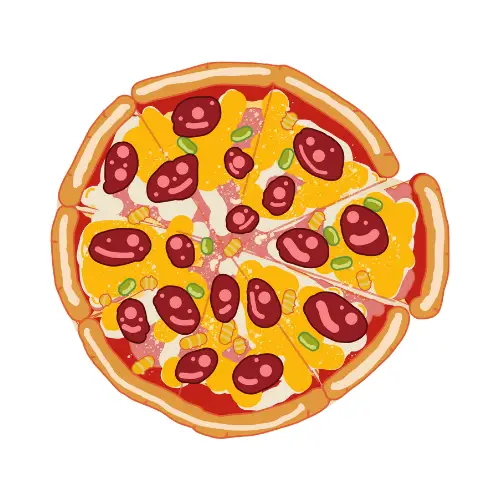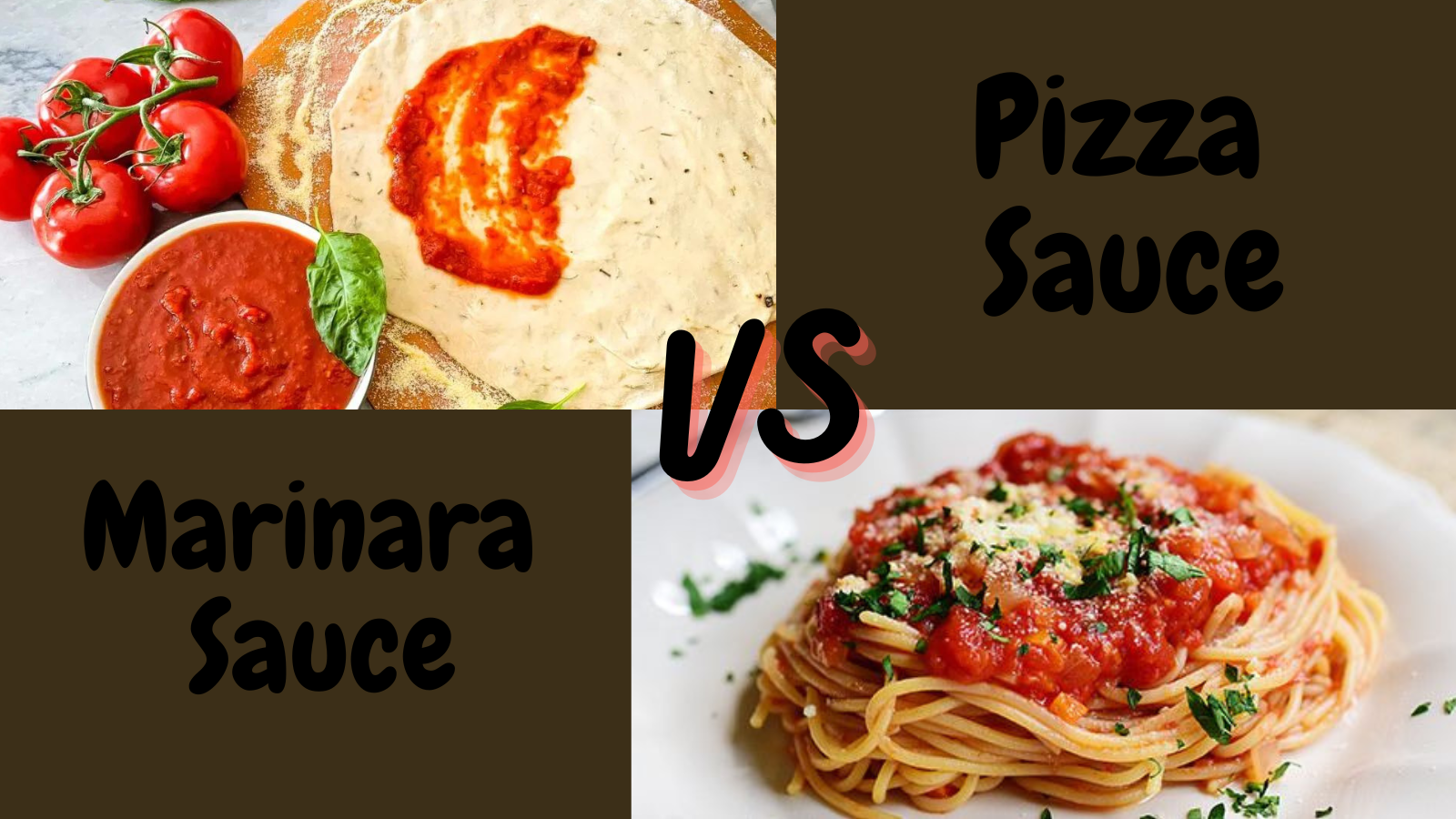Pizza Sauce vs Is Pizza Sauce Marinara
Some people are naturally talented cooks, while for others it’s more like studying chemistry. No matter whatever group you belong to, there’s a good possibility you’ve run into some terminology misunderstandings. The sauces are among the most baffling items. Why such a large number? Pizza sauce and marinara sauce are frequently confused. They differ, do they not? In reality, they aren’t.
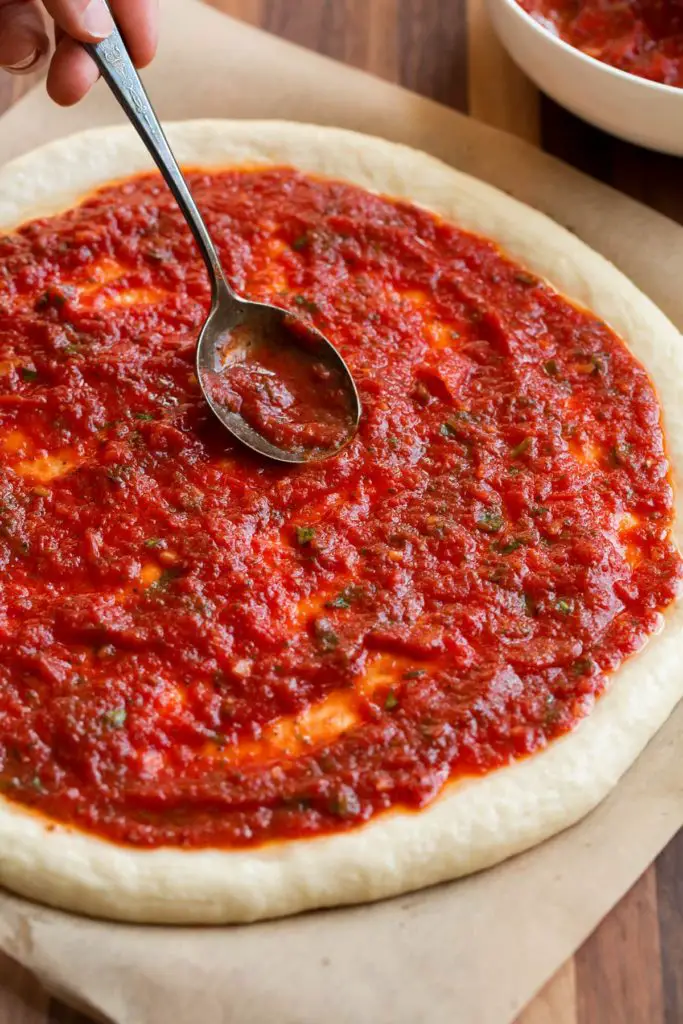
The place where the confusion comes from is pretty understandable: tomato paste or fresh tomatoes, as well as both sauces with similar seasonings and ingredients, are included in them, making them very similar.
Here, we will dive deep into the details of the recipes of each seasoning and see if they can be used in place of each other. If you are ever confused about pizza sauce and marinara, then this article is for you!
To start our “what is the main difference between pizza sauce vs marinara” argument, we will get into the details of both tomato sauces. So, let’s start with some marinara!
What is Marinara sauce?
Brief History is Marinara sauce
Following the arrival of tomatoes in Europe in the middle of the 16th century, ship cooks created the marinara sauce. This meat-free Italian seasoning had a long shelf life due to the inherent qualities of tomatoes, making the red sauce suitable for use on lengthy voyages.
In many parts of the world, chefs serve Spaghetti marinara, whose recipe includes fish, seafood, and a tomato-based sauce. However, the Italian classic has nothing in common with this recipe. The same goes for the “Mariana sauce“, which is just a mispronunciation of “marinara”.
Italy is also home to a dish of a similar name to the red sauce, although there it is known as “Alla Pescatore”.
Several urban legends surround the creation of marinara sauce. According to the first, in the middle of the 16th century, Neapolitan sailors, who were sailing back to Naples from America, brought out the marinara sauce.
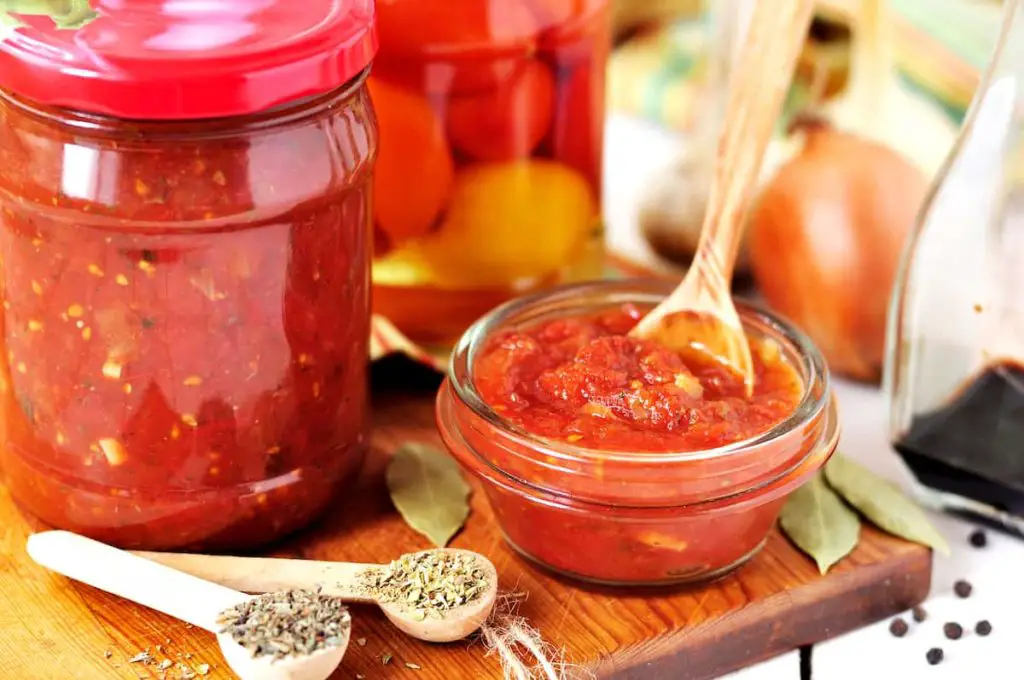
Another urban legend claims that the seasoning was created by the Neapolitan sailors’ wives on the shore after their husbands arrived from a long voyage with tomatoes that were new to Italy.
The first cookbook to include this recipe was written and published in Italy in the late XVIIs. However, this version of the seasoning was different from today’s version.
“Marinara” is an Italian word recipe, also known as “sailor sauce” in English, and the sauce includes capers, olives, and other ingredients.
If you want to make pasta, rice, seafood, and pizza the way the Italians do it, you should add marinara. As a substitute for conventional ketchup, marinara has grown in popularity in US cuisine recently, with some people even using it as a dipping sauce for your Italian sausage or mozzarella sticks.
When you add marinara’s herbaceous flavor, any dish will become great. Thus, different versions of marinara sauces have popped up in different parts of the world.
It is entirely up to you to choose what recipe suits you more!
The sauce itself
Usually, when we speak about marinara we mean a sauce that includes tomatoes or tomato paste, garlic, onions, herbs (such as basil and oregano), and spices.
Only to strengthen our pizza sauce vs marinara argument, almost all of the elements that comprise this sauce and pizza sauce are the same, with the exception that marinara also has onions and red pepper flakes in it. To make the sauce’s flavor richer, olive oil is added.
This also makes it more eligible for usage as a spaghetti sauce. At last, to finish up the seasoning, most chefs add sugar to marinara to improve the flavor.
Toss the spaghetti on a platter, then top with marinara sauce and fresh herbs. Instead, grill a few sandwiches and dip them in this tomato sauce.
How to make a Marinara sauce?
Discover how to make a marinara tomato sauce that goes well with your upcoming meal by following the cooking process provided below.

Step 1. To begin, take a deep saucepan and add two tablespoons of olive oil to it, and heat it over a medium burner.
Step 2. After adding the oil, stir in the minced or chopped garlic and cook until it becomes pink in color.
Step 3. Add some sliced onion and continue cooking.
Step 4. Don’t forget to add 12 cups of water to the skillet, as well as some crushed fresh tomatoes, tomato paste, or maybe even canned tomatoes to ensure that all of the tomato chunks from the can are used.
Step 5. Spices may be added. Oregano, pepper, salt, fresh basil, and red pepper flakes are a few ingredients that go well with marinara. Red pepper flakes are very important for marinara. They give it an exquisite taste.
Step 6. Stir all of the ingredients together, lower the heat, and cook the tomato paste for 30 minutes.
Step 7. Take out the basil leaves, then mash the pieces to the desired consistency. You are now done!
Because there are several ways to cook the marinara sauce, you may serve it with a variety of foods. Using marinara as a spaghetti sauce would be a nice idea for a meal if you mix it up with some ground beef and then make a pasta dish out of it all.
The result would be a tasty and satisfying dish suitable for a family gathering, due to the nourishment of our spaghetti sauce comprised of ground beef and marinara sauce, as well as a nice amount of pasta. Or maybe you want to follow the traditional Italian Alla Marinara recipe? This alone can make you and your family cheerfully say the Italian word “Bellissimo“!
What is Pizza sauce?

A brief history is Pizza sauce
The term “pizza” first appears in a Latin manuscript from the city of Gaeta in central Italy, which was then a part of the Byzantine Empire, in the year 997 AD. A Duodecim pizza (“twelve pizzas”) is supposed to be given to the Bishop of Gaeta every Christmas and another twelve on Easter Sunday, according to the scripture.
Some foods served on pieces of bread in the households of the ancient Greeks and Romans were the forerunners of this famous dish. Italian pizza first made an appearance in Naples in 1522, in connection with the introduction of tomatoes to Europe. A unique class of bakers known as a “pizzaiolo” emerged in the 17th century and served this food piece to Italian peasants.
The Italian monarch Umberto I and his wife Margherita of Savoy, after whom one of the recipes and a variant of the delicacy, Margarita, was named, subsequently fuelled the desire for the new dish. Maria-Caroline of Habsburg-Lorraine, the wife of the Neapolitan king Ferdinand IV, lived from 1752 to 1814. (although there is the opinion that this is just a legend).
Along with Italian immigration, pizza arrived in the United States around the end of the second half of the 19th century, and it is believed to have originated in Chicago. The semi-finished version of the dish first debuted in 1957. Ready-made frozen semi-finished pizzas that may be heated in a microwave or oven before consumption had become common by the turn of the 20th century.
The sauce itself
Who has never heard of “pizza sauce“? The name makes itself known to anyone who is still unaware of it. This seasoning is what serves as a foundation for all kinds of pizzas. When constructing a wonderful pizza the tomato sauce is essential. Pizza sauce includes many different spices, red peppers, onion powder, basil, garlic powder, and oregano for example.
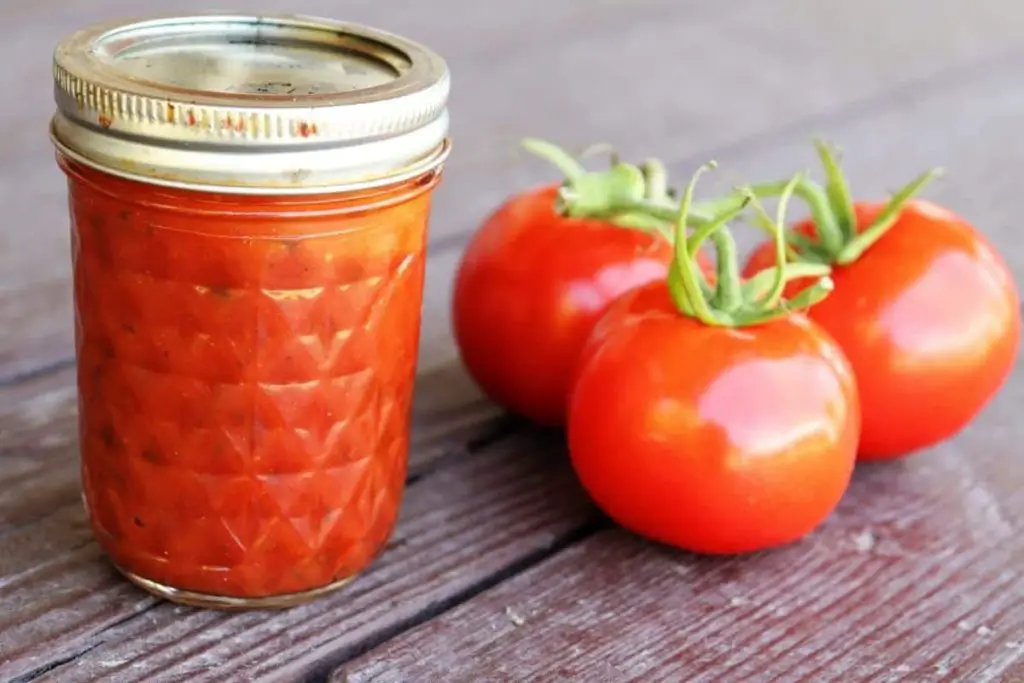
Additionally, this traditional tomato sauce requires some kind of oil. Olive oil is usually used, but vegetable oil can also be. The base for seasoning is tomatoes. They can be crushed or in the form of tomato paste or tomato juice. The tomatoes are what gives the sauce its rich red color. Additionally, it requires some salt and sugar to improve the flavor. It has a thick consistency, so the does pizza dough not soak, and the sauce serves as a link for other ingredients.
By combining these ingredients, a tasty seasoning is created that goes well with parmesan cheese and hearty pepperoni on top of the pizza crust. The pizza sauces you buy at the grocery store nowadays generally comprise identical basic ingredients: tomatoes and spices.
How to make an Italian pizza sauce?
Nothing really unique, but you can easily prepare pizza sauces with the things you already have in your kitchen. Here is the cooking process for the pizza sauce recipe:
Step 1. Put some tomatoes in a basin after opening the tomato cane.
Step 2. Use an electric hand mixer or food processor to blend them.
Step 3. Blend one more time, and then include some salt, olive oil, and fresh basil leaves. Pizza dough can now be covered with sauce.
Easy homemade pizza sauce is ready!
How to make a mixed pizza sauce?
You can always add some more spices and elements to your seasoning without cooking it. Making pizza sauces is elementary and doesn’t require any special skills in Italian cuisine. Teenagers can accomplish this quickly too. Great news for pizza lovers! Here is a simple sauce recipe for your future pepperoni or queen Margherita.

Step 1. Combine 1 teaspoon of olive oil, 1 teaspoon of crushed red pepper, 1 teaspoon of garlic powder, and 1 teaspoon of onion powder in a skillet over low heat. Then cook it all for 30 seconds.
Step 2. Add the remaining ingredients after taking the pan from the heat.
Step 3. Combine all the ingredients with a hand blender Our seasoning is now ready and heated.
What are the similarities between each sauce?
What do marinara and pizza sauce have in common? Let’s look at some of the similarities.
Pizza sauce and marinara sauce have certain similarities.
- Italian food is where sauces originated.
- Tomatoes are the major component.
- There are varying amounts of several aromatics, including basil and garlic.
- They have a delicate feel when combined, although not as much liquid as tomato juice.
- They are either paired with or combined with other foods
How do both sauces differ?
Nowadays, many people believe that “pizza sauce” and “marinara sauce” are the same thing. Although the term “pizza sauce” can theoretically be applied to any ingredient put on a pizza, marinara differs from other sauces in this sense.
What aspects of the pizza sauce vs marinara dispute need to be considered?
Due to the variety of uses, for example, as a dipping sauce or pasta sauce, it is exceptionally peculiar. There is another difference between marinara and pizza sauce. Pizza sauce should not be used as a dipping sauce or pasta sauce, it is too thin for that. Therefore, there is nothing left but to use it for its intended purpose. And one more thing.
The marinara sauce gets thicker as it cooks, while the pizza sauce stays thin. Moreover, pizza sauce usually contains only crushed tomatoes and some seasonings and is also cooked in the same oven as the dish, unlike marinara. But there are many distinct kinds available nowadays. In actuality, a lot of pizzerias utilize pre-packaged, pre-bottled pizza sauce.
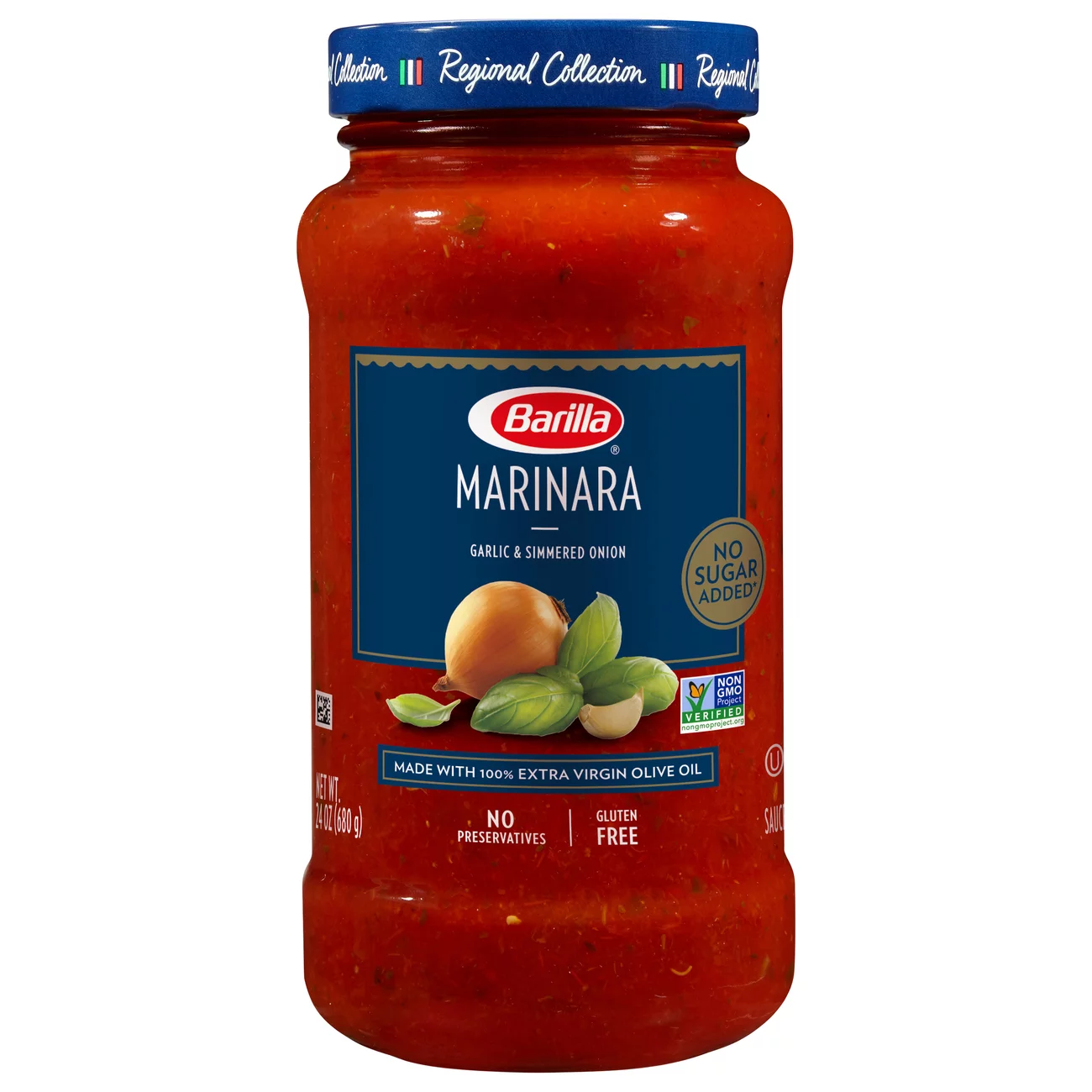
Due to the fact that marinara sauces are much more satisfying than pizza sauce, it adds calories to the dish. Marinara is a heartier sauce than many other sauces, such as pasta sauce. For instance, ground beef would essentially soak up the spice and would add that extra flavor to your handmade pasta dishes with this robust and hearty spaghetti sauce. Imagine that with some chicken parmesan. Yum!
One of the main distinctions between the two sauces I the frequency of their usage as key ingredients. Marinara is almost always the highlight of the whole meal.
Pizza sauce, however, is almost always a supporting component, not the main one. It only draws attention to the pizza dough. If you don’t have any pizza sauce, using marinara may be a drawback if you like a “lush” pizza, as it is way thinner as a result.
Even after being reduced, the marinara sauce may still be thinner than pizza sauce when it is seldom obtainable. Home cooks and even a number of chefs have regularly substituted one for the other, and this is not a coincidence in the chef community, despite the obvious differences between them.
Marinara has a more “full”, rich taste, which is attributed greatly to a pizza. If you think about it, pretty much any sauce that you put on a pizza is a “pizza sauce”, and marinara is no different in this regard.
Identical logic also applies to spaghetti: if you add marinara to noodles, it becomes a pasta sauce as well.
The last distinction relates to how they are applied. Pizza sauce is applied prior to cooking, and marinara sauce can be added afterward, as we’ve just said; but, the sauces themselves can be utilized in a variety of other ways.
Pizza sauce vs is pizza sauce Marinara – what works better with pizza?
Both of the sauces that we are discussing in this article are used frequently in Italian cuisine. However, in this regard pizza sauce is way better and fits more (the name eve implies it). There are clear explanations for this: pizza sauce is a staple ingredient for a vast majority of pizza recipes. While being a prevalent seasoning, marinara sauce seldom enhances pizza.

Any variety of pizza tastes great with marinara sauce. On their pizzas, some individuals, however, like to spread single and double-strength pureed tomatoes. However, this tomato puree may be used on any pizza and is offered in tetra packs all around the world. The benefit is that it solely imparts the tomato flavor, not affecting the taste of the other toppings. It also has the benefit of requiring no cooking.
However, many people, especially in the US, choose to top their pizza with a tomato sauce that amplifies a variety of tastes. Using a variety of spices together is one of the defining characteristics of American cuisine, with the general rule being that the more the merrier.
These folks are recommended to use pizza sauce that has been carefully made. It is simple to make yourself or purchase in a variety of forms at any store, just like with any tomato sauce. Always keep in mind that the food must taste excellent.
This has a very easy explanation: marinara is thick and pre-cooked. Usually, pizza recipes cannot be made with such a thick, precooked spice. Because it was already cooked, overcooking it in the oven might result in a harsher flavor.
The main ingredients of pizza sauce are usually the same, no matter which restaurant you go to across the world. Consequently, marinara frequently makes a superior substitute in recipes other than pizza, for example as a spaghetti or rice sauce.
What works better with pasta, marinara, or pizza sauce?
You’ll need to decide on a few key things before you can make your decision here. First, you’ll need to choose your preferred taste. The following points should be considered, as our pizza sauce vs marinara sauce debate continues: Marinara is more smooth because it includes olive oil, while pizza sauce, as well as spaghetti sauce, is sourer.

The two sauces synergize well with pasta, but you need to remember that their qualities will attribute more to different recipes.
For instance, pizza sauce will synergize well with fettuccine, while marinara will work better with arrabbiata.
Pasta sauce normally will not work with pizza dough, as it has a thicker consistency, while a usual pizza requires a sauce with a thinner consistency. Thus, pasta sauce probably won’t work as an easy homemade pizza sauce.
The marinara sauce refers to a red sauce that is very dense, so this applies to it as well, as it will make a much thicker pizza sauce than it is normally needed. Only a smooth tomato sauce will pass as a spaghetti sauce, giving it a robust flavor and texture.
FAQ
Can I substitute pizza sauce for Marinara sauce?
While it would make life way easier, you cannot replace one with the other.
Their differences in thickness and flavor make it impossible to utilize the two sauces interchangeably.
For instance, it is very rare to use pizza sauce in pasta.
To determine what fits better for your next cooking session, you may prepare a tiny bit of each and taste it.
If one is needed in a recipe, just put the other in the freezer.
Or, as we’ll see in a moment, they can also be combined.
Is Marinara sauce the same thing as pizza sauce?
Despite the two tomato sauces’ apparent similarities, they hold a vast array of distinctions. People who aren’t as engaged in cooking usually ignore the main difference between pizza sauce and marinara (with the majority of them being listed above in our pizza sauce vs marinara debate):
Thickness
Marinara is way thicker than pizza sauce. The reason for this is quite simple: pizza sauce requires a lower density in order to spread evenly across the dough. For a variety of reasons, including making it simpler to scoop with chips, marinara is way denser.
Tomatoes
Perhaps the greatest choice when making marinara is crushed San Marzano tomatoes. Thickness was mentioned as a contributing element in the preceding paragraph. Peeled tomatoes decrease the intensity of the flavor when they are mashed.
Flavor
Pizza sauce’s taste is less intense and hot than that of marinara. In our pizza sauce vs marinara argument, this is one of the most deciding factors.
Cooking Method
Preparation is one of the deciding factors that differ between marinara and pizza sauce. Marinara is cooked in a saucepan before being served, becoming more dense and full of taste as result. Pizza sauce is spread on the dough and is prepared simultaneously with the meal in the oven.
Is pizza sauce the same as Marinara sauce?
No, it’s not! Sauce for spaghetti and marinara has a very strong difference.
Typically, meat, veggies, and spices are found in spaghetti sauce.
Additionally, it has a distinct taste and thicker consistency than marinara. Marinara sauce lacks meat and is thinner in consistency.
Can you put Marinara on pizza?
Yes, certainly! They are both great for making homemade pizza. If you use marinara as a base for your dish, it becomes, in essence, a more flavorful and thick pizza sauce.
If you don’t like the spice layer to be too thin, add one or two tomatoes.
We would recommend using San Marzano, as they work tremendously with sauces.
They may be peeled tomatoes, crushed tomatoes, or even canned tomatoes.
Is pizza sauce Marinara or tomato sauce?
Although we have already discussed their differences, there is one secret: they can both turn into pizza sauce and vice versa.
Thicken the pizza sauce and add any of these spices you like: dried oregano, fresh basil leaves, black pepper, maybe some balsamic vinegar, minced garlic, and Italian seasoning.
By doing this, you will get a fresh herbal flavor and thickness for your sauce.
And if you want to make marinara pizza sauce, just pour in some tomato juice. You can even add water! The main thing we need is to get a homogenous tomato sauce.
Can you freeze the two tomato-based sauces?
You can, indeed! You may freeze both sauces in containers if you prepared too much sauce for one dinner or are just a generous person who likes to stock up.
The only thing you have to remember is that when you want to use them again you’ll have to put them into a refrigerator the night before you want to cook, and then them in a microwave for 30 minutes at the highest temperature.
How long can the two sauces remain frozen?
On average, both sauces can remain unspoiled for around 3 months.
It would be a nice idea to put markings on containers with dates so that you remember when you put the sauce in the freezer.
A summary is pizza sauce Marinara
You have read a thorough examination of the pizza sauce vs. marinara sauce debate in this article, from their origins and preparation methods to the subtleties of their application.
Garlic, herbs, olive oil, and crushed tomatoes are the essential ingredients (such as San Marzano tomatoes) that never change. But unlike pizza seasoning, which is only good with pepperonis and queen Margheritas, marinara can be used in a variety of dishes, for example as a dipping sauce or pasta sauce for your pasta dishes.
So, to answer the main issue of the article, NO, pizza sauce is not marinara. However, they might occasionally be substituted for one another. The simplest example of this is pizza sauce Marinara, which calls for marinara in certain pizza recipes.
However, to wrap up this conversation, we would like to say that in your kitchen you are the chef, a virtuoso of your creations.
So, which one is better, pizza seasoning or an original Italian recipe called marinara? It’s up to you to decide. So, feel free to mix and match and try new things!
Let us know! We love hearing customer feedback on our blog posts.
